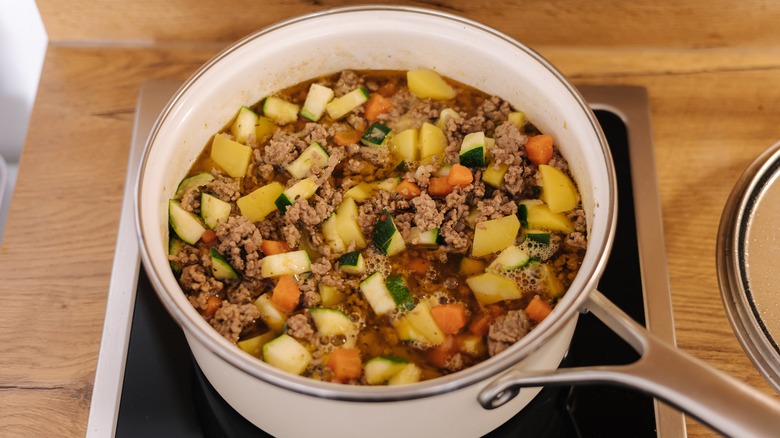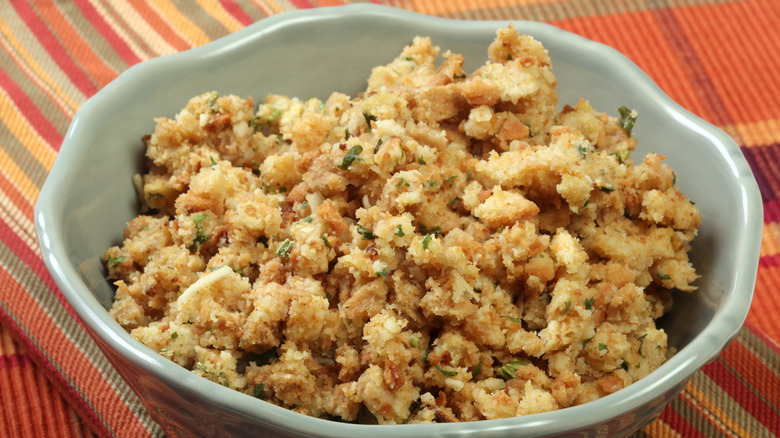What Does A Farce Mean In Cooking Terms?
Many people might know the word farce to mean comedic exaggeration in literature. The moment can have people laughing heartily. The culinary term might have people feeling full, but that is because of the hearty ingredients in that dish. Although the French word "farce" can be translated to the verb "stuff", the English term farce can be traced back to 14th century England.
Interchangeable with the term forcemeat, the description refers to food that people would consider a stuffing. Meat, fish, or vegetables would be chopped, seasoned, and combined. The dish would be served on its own or stuffed into another protein. The term farce or forcemeat is referenced in older recipes, but it might not be as commonly used today.
Even though the term might not be as overly familiar, stuffing is a common food and technique in many recipes. From that traditional Thanksgiving stuffing to a side with a pork chop, the dish helps to round out the meal. As long as the dish is well seasoned and compliments the main meal, no one would find the pairing a laughing matter.
Could the stuffing versus dressing debate be a type of farce?
The debate about the difference between stuffing and dressing can be more than just a cooking methodology. Even if the term "stuffing" can be traced back to farce and forcemeat, the terms stuffing and dressing seem to be interchangeable. Some people might scoff at the idea of placing that food mixture inside the bird. Others might prefer the more robust flavor that develops from allowing the meat to flavor the mixture during the long cook. While both sides have their unwavering opinions, the reality is that both versions are basically the same food.
Over time, the term "stuffing" has become a generic term versus a clear description of the concept. From instant stuffing to just easy naming, the word is more generic than specific. Although it may never be as simplistic as genericization, like Kleenex for tissue, it is a situation where specificity may not be as important to the general cook. In the end, the whole conversation might be a comedic exercise, but the flavor of the food served better not be laughable.
What are the various types of forcemeat?
Although the term forcemeat might not be the most compelling word on a menu description, the flavorful, intricate dish could have people discovering the powerful word. Generally, the term can refer to ground meat combined with fat, seasonings, and other ingredients. Although it can be a stuffing, it is more often used to describe a pate, terrine, or even a sausage.
Common styles of forcemeat are mousseline, straight, champagne, and gratin. Each version has a particular texture as well as a fat-to-protein ratio. Some recipes feature lean meat while others include offal. Usually, it is kept well chilled to ensure that the fats remain emulsified. But, generally speaking, sausage is a type of forcemeat. It is a ground meat with emulsified fat. It might not require as precise techniques as the other versions, but it falls under the general term.
Now that you know what these classic terms mean, it could spark a few comedic moments at your next dinner party discussing the interesting history of food.


